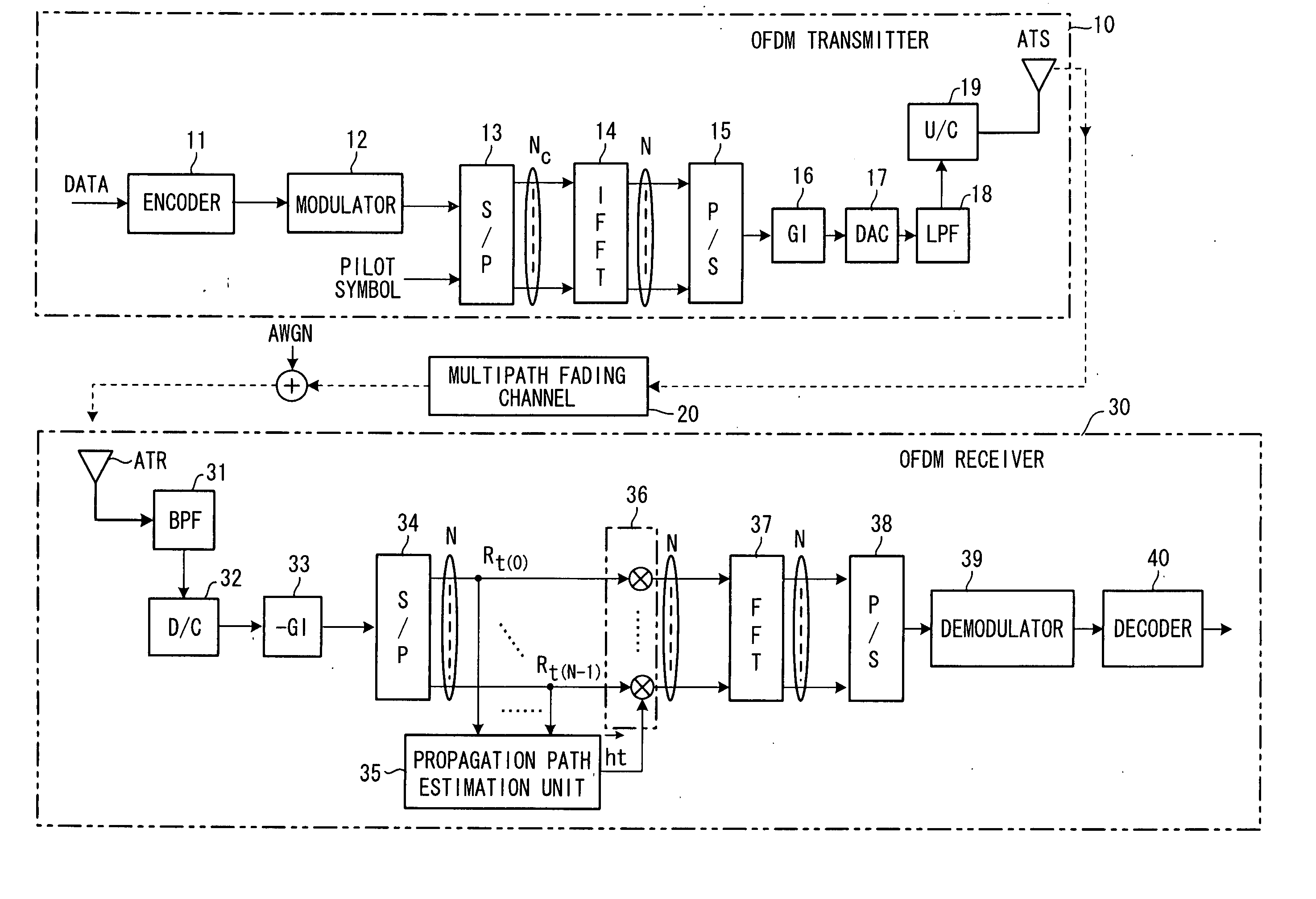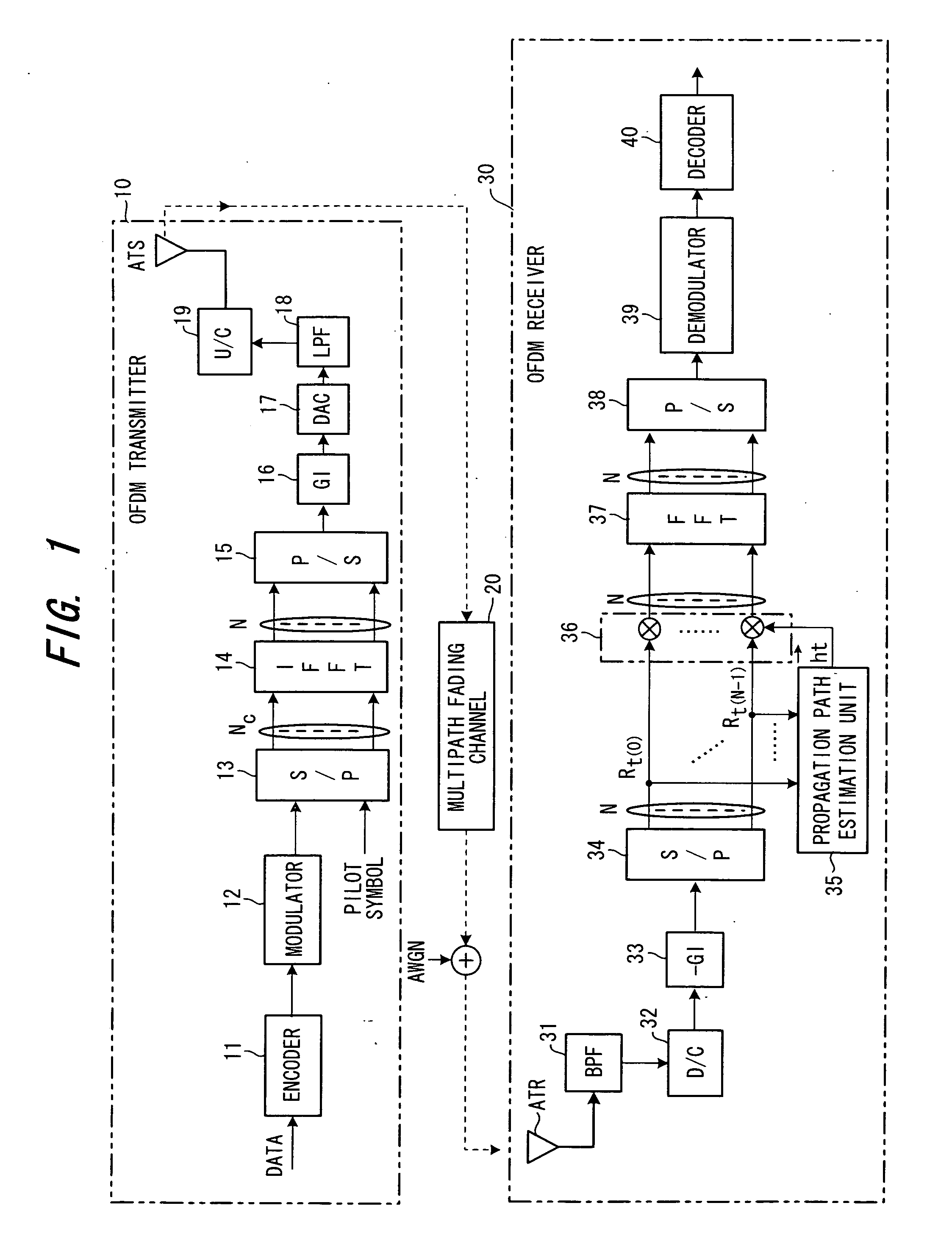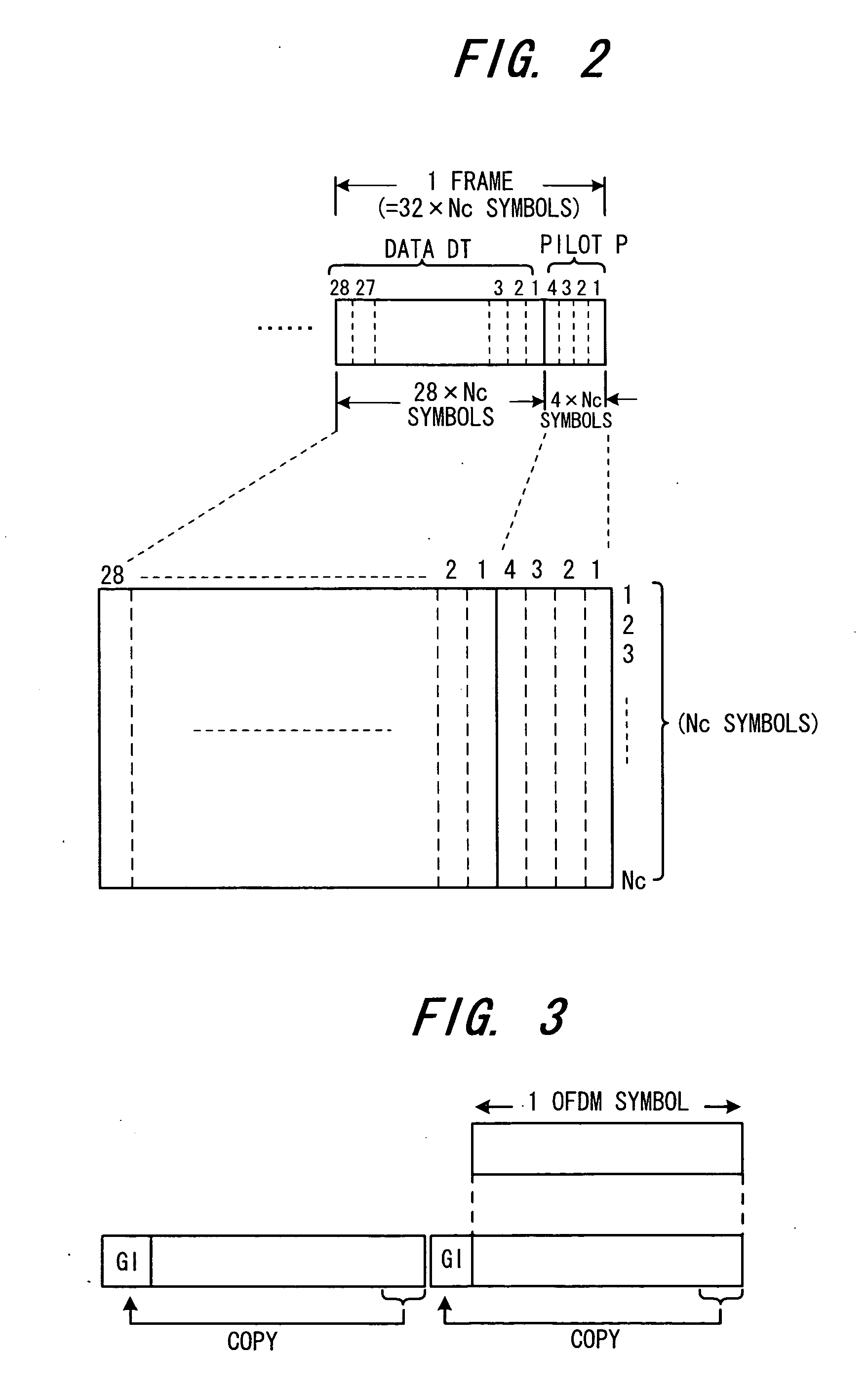Propagation path estimation method and apparatus
a propagation path and estimation method technology, applied in the field of propagation path estimation methods and apparatuses, can solve the problems of inability to perform averaging, affecting the accuracy of propagation path estimation, and reducing the correlation between channel fluctuation amounts between adjacent subcarriers, so as to achieve the effect of suppressing background nois
- Summary
- Abstract
- Description
- Claims
- Application Information
AI Technical Summary
Benefits of technology
Problems solved by technology
Method used
Image
Examples
first embodiment
(A) First Embodiment
[0061] In execution of propagation path estimation of an OFDM receiver in an OFDM communication system, a CIR (Channel Impulse Response) estimation unit estimates an impulse-response group of a propagation path, a valid-impulse discriminator selects impulse responses (CIR), which are greater than a predetermined threshold value, from the impulse-response group, and a propagation path estimation unit generates a matrix expression using a CIR estimation vector that includes the selected CIRs as elements, a matrix S, which is decided by a number N of points of an IFFT used in OFDM modulation and number Nc of subcarriers used in actual transmission, and a propagation-path response vector, and obtains the propagation-path response vector and estimates the propagation path by solving this matrix expression.
[0062]FIG. 1 is a block diagram illustrating the configuration of an OFDM communication system having a channel estimation unit according to the present invention. ...
second embodiment
(B) Second Embodiment
[0112]FIG. 14 is a block diagram illustrating a second embodiment of an OFDM communication system having a propagation path estimation unit according to the present invention. Components in FIG. 14 identical with those of the first embodiment of FIG. 1 are designated by like reference characters. This embodiment differ in the following points: [0113] (1) A Fourier transform unit 41 is provided for applying FFT processing to the time-domain propagation-path response vector
{circumflex over ({overscore (h)})}t
that is output from the propagation path estimation unit 35, and for outputting a propagation-path response vector in the frequency domain
{circumflex over ({overscore (h)})}f [0114] (2) A propagation path compensator 42 is provided for performing channel compensation by multiplying the Fourier-transformed receive-signal vector
{overscore (R)}f=[0 . . . 0Rf(0)Rf(1) . . . Rf(N-1)0 . . . 0]T
in the frequency domain by a propagation-path response complex conj...
third embodiment
(c) Third Embodiment
[0115] The foregoing relates to a case where the present invention is applied to estimation of propagation path in an OFDM receiver. However, the present invention is also applicable to path search in a RAKE receiver of a CDMA (Code Division Multiplex Access) scheme. FIG. 15 is a block diagram illustrating a third embodiment in which the present invention is applied to path search of a RAKE receiver.
[0116] A radio receiver 62 frequency-converts a high-frequency signal, which has been received by an antenna 61, to a baseband signal and applies quadrature demodulation. A low-pass filter (LPF) 63 removes unwanted frequency components and inputs the resultant signal to an AD converter 64. The latter converts the input quadrature-demodulated signal to digital data, and a path searcher 65 searches a receive signal Rt for paths constituting a multipath system. Fingers 66a to 66n are provided for corresponding ones of paths of the multipath system and each has a desprea...
PUM
 Login to View More
Login to View More Abstract
Description
Claims
Application Information
 Login to View More
Login to View More - R&D
- Intellectual Property
- Life Sciences
- Materials
- Tech Scout
- Unparalleled Data Quality
- Higher Quality Content
- 60% Fewer Hallucinations
Browse by: Latest US Patents, China's latest patents, Technical Efficacy Thesaurus, Application Domain, Technology Topic, Popular Technical Reports.
© 2025 PatSnap. All rights reserved.Legal|Privacy policy|Modern Slavery Act Transparency Statement|Sitemap|About US| Contact US: help@patsnap.com



